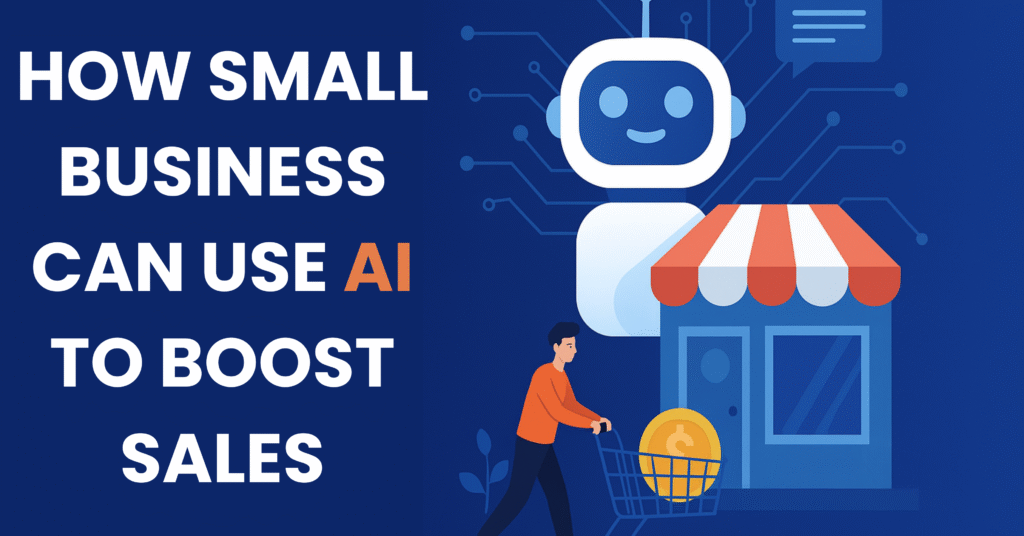
Introduction:
In 2025, artificial intelligence (AI) is no longer just a futuristic concept — it’s a powerful tool reshaping how businesses operate worldwide. For small businesses, AI presents an incredible opportunity to compete with larger companies, save time, reduce costs, and most importantly, boost sales.
Whether it’s automating customer service, predicting buying trends, or creating personalized marketing campaigns, AI can help small businesses grow faster than ever before. In this guide, we’ll explore the best ways you can use AI in 2025 to grow your revenue and stay ahead of the competition.
Why AI is a Game-Changer for Small Businesses:
1.Saves Time and Cuts Costs:
AI can handle repetitive tasks like answering customer queries, scheduling meetings, and processing data. This allows business owners to focus on strategy and growth.
2.Makes Smarter Decisions.
AI-powered analytics provide insights based on real-time data, helping businesses make better decisions about pricing, marketing, and inventory.
3.Improves Customer Experience.
With AI-driven personalization, customers get tailored product recommendations, faster responses, and a more engaging shopping experience.
Top AI Tools for Small Businesses in 2025.
Using the right tools is the first step toward implementing AI successfully. Here are some of the best AI tools you can start with:
1.AI for Marketing.
- Jasper AI – Helps create high-quality marketing content, blog posts, and ad copy in minutes.
- Copy.ai – Generates social media captions, emails, and website content quickly.
- Writesonic – Creates engaging ad campaigns and product descriptions.
2.AI for Customer Support.
- Tidio – AI chatbot that answers customer questions instantly.
- Intercom AI – Personalized customer messaging and live chat automation.
3.AI for Sales Predictions.
- HubSpot AI – Predicts which leads are most likely to convert into customers.
- Zoho AI – Helps forecast sales trends and identify high-value customers.
Step-by-Step: How to Implement AI in Your Business.
Step 1: Identify Repetitive Tasks.
Look for tasks that take up too much time, such as replying to FAQs, updating stock, or processing customer feedback.
Step 2: Choose the Right AI Tool.
Pick tools based on your business goals — marketing, customer service, or sales growth.
Step 3: Train Your Team.
Make sure your team understands how to use the AI tool effectively.
Step 4: Track and Optimize.
Regularly monitor results and make changes to improve performance.
Real-Life Examples of AI Boosting Sales.
- Example 1: A small online store used AI-driven email marketing to send personalized product suggestions, increasing sales by 30%.
- Example 2: A café used AI to analyze buying patterns and offer targeted discounts, doubling its repeat customers.
Common Mistakes to Avoid.
- Over-relying on AI: Human creativity and relationship-building are still essential.
- Ignoring personalization: Generic messages don’t convert as well as tailored ones.
- Not tracking results: AI works best when you analyze data and make improvements.
Conclusion.
AI is not just for big corporations — small businesses can benefit just as much. By choosing the right tools, personalizing customer experiences, and making data-driven decisions, you can significantly boost your sales in 2025.
Start today — pick one AI tool that suits your business, test it for a month, and track the results. You might be surprised at how quickly you see growth.







Leave a Reply